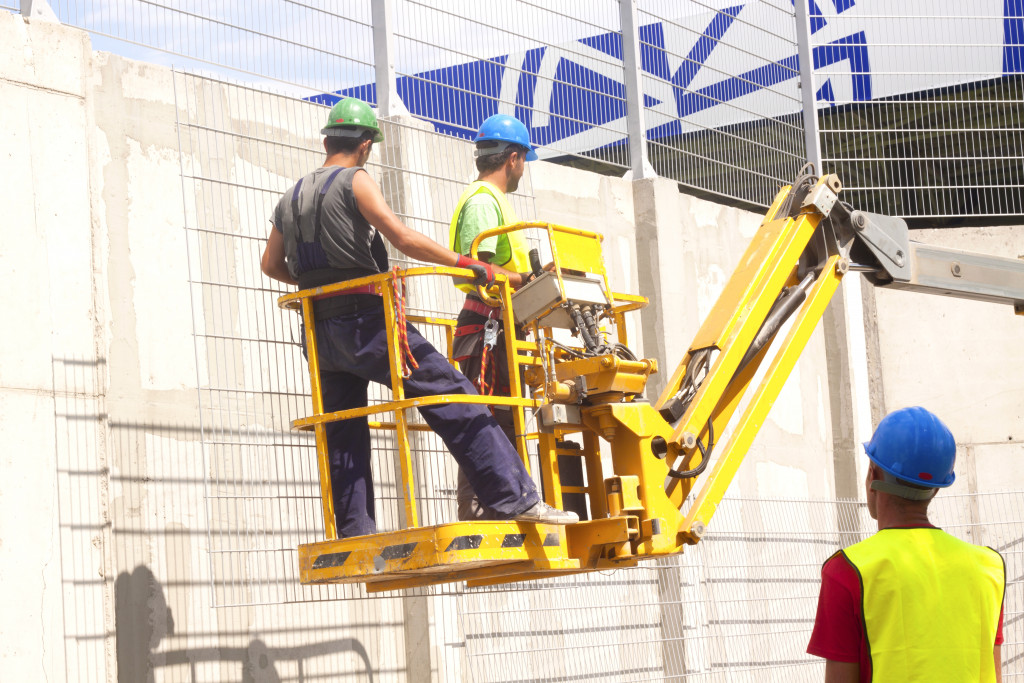Accidents in 2020 resulted in the death of 4,764 workers in the United States. During the same period, 1,008 deaths were in the private construction industry. The figure is 21.3 percent of the total. The other leading category for fatal work injuries was transportation and warehousing. In this sector, 805 deaths were reported in warehousing and transportation.
Ensuring the safety of your employees should be a top priority. After all, when people feel safe in the workplace, they are more productive and engaged with their work. There are many things business owners and entrepreneurs can do to ensure that their workspace is secure and that their employees feel safe while on the job. Let’s take a look at some of these tips.
Organize Regular Safety Drills
Safety drills are an effective way to prepare your staff for any potential emergency. This could include fire drills, hazardous material spills, or even violent intruders entering the building. You can help your employees become familiar with proper evacuation procedures by running regular safety drills. Therefore, they know how to respond to an emergency. You can also use these drills to review your safety policies and procedures with your staff, so everyone knows what is expected of them in different scenarios. This can help ensure that everyone is prepared and ready to act in an emergency.
In addition, you should also consider training your staff on basic first aid and CPR. These safety training programs will equip employees to handle any injuries or medical emergencies that may arise. This can give them the skills and confidence to respond quickly and appropriately when needed.

Invest in Proper Safety Equipment
Businesses need to invest in proper safety equipment to protect their workers from potential injuries while on the job. Workers can be seriously injured or killed in a workplace accident without the proper safety gear. Some common safety hazards that can be mitigated with the use of proper safety equipment include:
- Falling from height: Workers who are required to work at height, such as construction workers and window washers, are susceptible to serious injury if they fall. In some cases, workers may not be able to brace themselves properly upon landing, leading to broken bones or worse. Safety harnesses and other fall protection gear can help mitigate this risk.
- Chemical burns: Many industrial and manufacturing facilities use harsh chemicals in their operations. These chemicals can cause serious burns if they come into contact with the skin. Eye protection and chemical-resistant gloves can help protect workers from these dangers.
- Heavy objects: Workers who handle heavy objects regularly are at risk for back injuries and other musculoskeletal injuries. Lift belts and back supports can help prevent these injuries. Businesses should also look for heavy-duty chain slings. The equipment allows the company to perform heavy lifting without worrying about work-related accidents.
By investing in the proper safety equipment, workers can minimize the risk of injury or death while on the job. This equipment can save workers from costly hospital bills, lost time at work, and even death.
Implement Policies and Procedures
Having clear policies and procedures in place is key when it comes to ensuring safety in the workplace. These should include guidelines for reporting accidents or injuries and protocols for responding to threats or violence. Additionally, ensure that there are clear rules about who has access to certain areas of the building or restricted documents. This ensures you can track who is coming and going from your workspace. Ensure all security systems, such as alarms or access control systems, are maintained regularly to ensure they are working properly at all times.
When establishing an employee safety training program, consider the specific needs of your workplace and the type of hazards or risks present. Then, determine the best way to provide training and instruction on handling those hazards and risks. Depending on the specific safety issues in your workplace, topics may include identifying hazardous materials, proper use of personal protective equipment (PPE), manual material handling techniques, fire evacuation plans, and general safety practices.
You should also include thorough instructions on using equipment or machinery and information about local laws and regulations that may apply. Finally, keep track of employee training sessions to ensure everyone is up-to-date with the latest changes in workplace safety standards.
Provide Employee Training
Your employees must receive appropriate training on handling various safety issues, such as dealing with hazardous materials or responding to violent behavior from customers or visitors. Providing this training will protect your workers and give them peace of mind knowing they have been taught how to react in challenging situations.
Taking care of workplace safety should be prioritized by business owners and entrepreneurs alike. These procedures help keep employees safe and make them more productive. It also ensures employees are engaged with their work tasks and fosters a culture where everyone involved takes employee safety seriously. With these tips in mind, you’ll have no problem securing your workspace!

